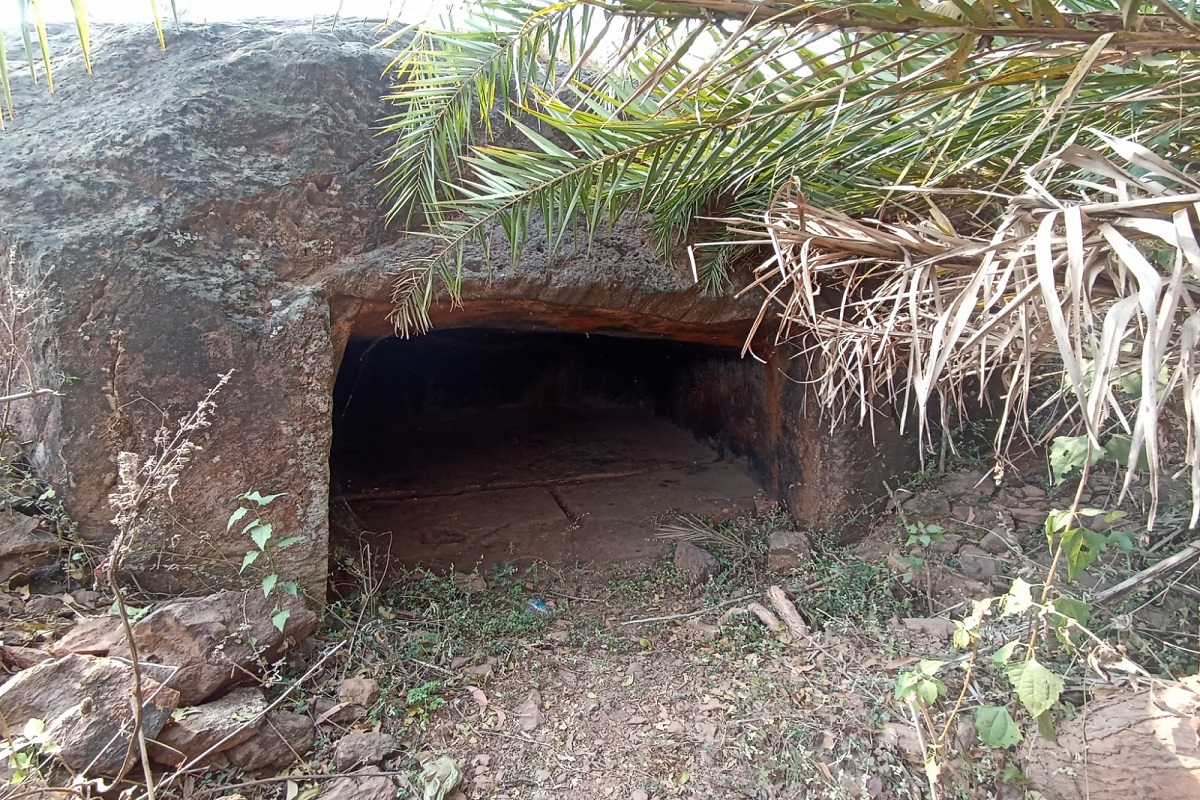The Odisha chapter of Indian National Trust for Art and Cultural Heritage (INTACH) has sought for the prohibition of quarrying activities in and around an ancient cave replete with rock carvings and inscriptions in Khurda district.
The exploration wing of INTACH recently conducted the survey and documentation of the ancient cave, rock carvings and inscriptions atop a small hillock in the Narangarh village near Tapang in Khurda district.
Advertisement
“The quarrying activity should be immediately stopped as the excavation and cutting has reached the base of the cave and is just 7-10 metres away at the base of the hilltop. The use of heavy machinery, compressors and cutters just near the cave will spell its doom. Besides, the place is an elephant corridor and the pachyderms are frequently seen here. The recent death of two elephants in nearby Bhusandpur is indicative of this fact”, the INTACH panel member Biswajit Mohanty observed.
The animal and human figurines carved on the walls indicate that the cave may have prehistoric origins. It is very similar to other caves found in the Mahanadi Valley, said INTACH researcher Anil Dhir.
The cave, called the Pandavahara Gumpha by the locals, is a natural formation which has been widened by chiseling and is very akin to the caves found in the Khandagiri and Udayagiri hills. It Is 20 feet by 10 feet wide and has a uniform height of 4 feet. There is a lot of rock art and inscriptions carved on the walls. Engravings in various geometrical forms and figures of human and animals are extensively depicted. Stone-age tool implements too have been reportedly found earlier in the vicinity of the cave, he said.
The Orissa Mining Corporation (OMC) has started clearance work for mining of Khondalite stone from the area. The land is incidentally owned by the Shree Jagannath Temple. It had been leased out to OMC for quarrying the stone blocks two years back.
The inscriptions carved on the walls of the cave near Tapang are in the Brahmi script. The symbols have motifs of both Jainism and Buddhism, INTACH researcher Deepak Nayak opined.
A proper archaeological survey of the region should be undertaken by the Archaeological Survey of India (ASI) and the State Archaeological department, Nayak added.
Odisha perhaps has the highest number of prehistoric rock art and caves among all states. While most of these sites are found in the hills of Sundargarh, Jharsuguda, Sambalpur and Kalahandi, recent discoveries by Intach teams in the lower Mahanadi Valley, in Kandhamal district and other areas need proper study, informed the INTACH panel.
The INTACH is already in touch with the Culture Department for the preservation of the Rock Art in the Bhima Mandali and a report has been submitted. Since the rock art site is about 45 minutes away from Bhubaneswar it can be turned into a major tourist attraction for heritage tourism, said Amiya Bhusan Tripathy, the State Convener of INTACH.











